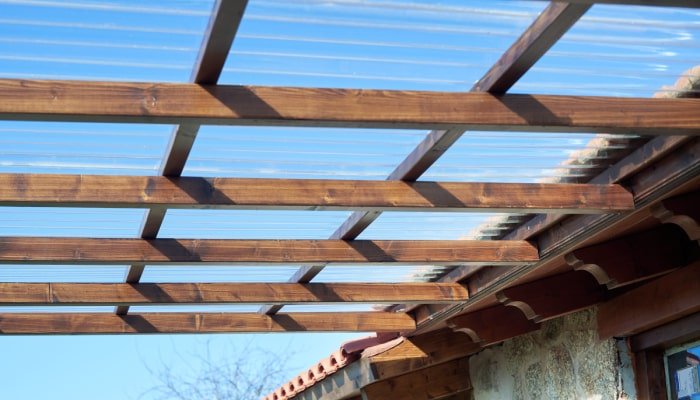Industries today demand materials that can withstand extreme conditions. Traditional materials like steel, wood, and aluminum often fall short when exposed to corrosive chemicals, harsh weather, and heavy impact. This is where FRP shines, offering a host of advantages that make it a superior choice for challenging applications. So, how does FRP stand up compared to traditional materials? Here is a breakdown:
FRP vs Steel
Steel has long been a staple in construction due to its strength and versatility. However, in corrosive environments, steel requires protective coatings and regular maintenance to prevent rust and degradation. On the other hand, FRP offers several distinct advantages:
- Corrosion Resistance: Steel can corrode based on the weather it is exposed to. FRP has a protective coating that eliminates this worry. Overall, this reduces your long-term maintenance costs.
- Weight: FRP is 75% lighter than steel, making it easier to handle and install without heavy machinery.
- Fabrication: Unlike steel, FRP can be fabricated using standard tools, meaning you won’t need the welders or cutting torches that steel structure projects require.
FRP vs Aluminum
Aluminum is prized for its lightweight and corrosion-resistant properties. However, it has limitations that FRP can overcome:
- Impact Resistance: Aluminum is lightweight, but without the durability to offset that, it can deform under impact. On the other hand, FRP retains its shape and integrity.
- Thermal Conductivity: Aluminum conducts heat, which can be a disadvantage in certain applications. FRP’s low thermal conductivity makes it a better insulator.
FRP vs Wood
Wood is a common material in construction because of its availability and cost. However, compared to FRP, it just doesn’t stand up:
- Durability: FRP does not warp, rot, or decay like wood does when it is exposed to moisture and chemicals.
- Insect Resistance: Since moisture is a problem for wood, it also makes it susceptible to pests, including termites. On the other hand, FRP is impervious to insects.
- Maintenance: Wood requires periodic treatment to prevent decay and insect damage, increasing the long-term cost. Since FRP does not have these same issues, the requirement for regular treatments is eliminated.
Benefits of FRP vs. Traditional Materials
When you assess all of the ways that FRP compares to traditional materials, it’s clear why this advanced makeup stands out in demanding applications. The unique properties of FRP vs. traditional materials provide numerous advantages that directly address the shortcomings of steel, aluminum, wood, and other conventional materials. Thanks to their makeup, these fiberglass products offer many advantages over traditional building materials. Here are the key benefits:
- Corrosion Resistance: FRP materials excel in corrosive environments, making them ideal for industries like wastewater treatment, chemical processing, and coastal installations. Unlike steel, which rusts, or wood, which decays, FRP maintains its integrity and appearance over time, even when exposed to harsh chemicals and weather conditions.
- Lightweight Yet Strong: FRP offers the strength of steel at a fraction of the weight. This not only simplifies transportation and installation but also reduces structural load and enhances design flexibility. For example, FRP components are easier to handle on-site, allowing for faster project completion without the need for heavy machinery.
- Non-Conductive: One of the standout features of FRP is its non-conductive nature. This makes it a safer option in environments where electrical conductivity could pose a hazard, such as in electrical substations or near high-voltage equipment. It enhances worker safety and reduces the risk of electrical accidents.
- Impact Resistance: FRP’s superior impact resistance ensures it can withstand substantial physical stress without cracking or deforming. This property is particularly valuable in high-traffic areas or industrial settings where equipment might cause impact damage. FRP maintains its structural integrity, ensuring long-lasting performance.
- Thermal Insulation: With low thermal conductivity, FRP provides excellent insulation properties. It helps maintain stable temperatures within structures, reducing energy costs and enhancing comfort in residential, commercial, and industrial buildings. Unlike metals, which conduct heat, FRP keeps environments cooler in summer and warmer in winter.
- Customizability: FRP can be molded into various shapes and sizes to meet specific project requirements. This flexibility allows for a wide range of applications, from custom parts for industrial machinery to architectural elements. Additionally, FRP can be produced in different colors and finishes, eliminating the need for painting or coating.
- Low Maintenance: The durability of FRP translates to minimal maintenance needs. Its resistance to corrosion, impact, and weathering means it requires fewer repairs and less frequent replacements compared to traditional materials. This results in significant cost savings over the life of the product, making FRP a cost-effective solution.
- Environmental Benefits: FRP products are often made with sustainable processes and can contribute to green building certifications. Their long lifespan and low maintenance needs reduce the environmental impact associated with frequent replacements and repairs. Choosing FRP supports sustainable construction practices.
Cost Analysis
FRP has a higher upfront cost compared to traditional materials, but the long-term savings in maintenance, repair, and replacement make it the cost-effective choice for your project. When you consider the durability, installation, and reduced maintenance requirements, FRP results in fewer disruptions and lower operational costs over time.
Why Choose Stabilit America’s FRP Systems?
As a leading FRP panels manufacturer, Stabilit America offers unmatched quality and performance. Our products are designed to meet the highest standards and are rigorously tested to ensure reliability. With a variety of manufacturing techniques, including pultrusion, continuous lamination, and compression molding, we provide solutions tailored to your specific needs. Our extensive catalog includes options for corrosion resistance, fire retardancy, and impact resistance, ensuring you get the right product for your application.

Take the Next Step with Stabilit America’s FRP Solutions
Whether you’re working on a new construction project or upgrading existing structures, FRP offers the durability and versatility you need. Its resistance to corrosion, impact, and extreme temperatures ensures that your installations remain strong and reliable over time. With lower maintenance requirements, you’ll save both time and money, allowing you to focus on what matters most. For more information, contact Stabilit America today. Our representatives are available nationwide to help you find the perfect FRP products by application for your project.


